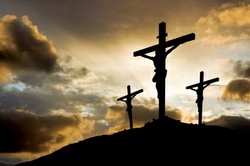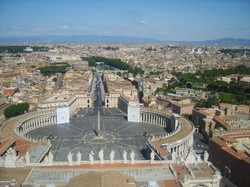In recent years there has been a spate of books trying to rethink Jesus from the standpoint of non-Christian belief systems, and this book belongs to this stream. Theosophy has for many years regarded Jesus as one of the ascended masters, so there is nothing new in the author's regarding Jesus in these terms. However, he combines his position as a Christian minister with membership of the order of Druids. This is not as radical as might appear, as druidry is for some a technique rather than a defined belief system. I am, however, more critical of the author's interpretation of Scripture and his theology rather than his pagan affiliations.

Jesus Through Pagan Eyes: a Christian Reflection and Analysis
by frankbeswick
Jesus Through Pagan Eyes attempts to combine Liberal Christian thinking with pagan spiritual insights, as the author combines being a minister with druid and theosophist beliefs.
The Phenomenon of Jesus
There is something strange and mysterious about Jesus. Dying a failure by a punishment reserved for outcasts from Judaism and traitors to Rome in a backwater of the Roman Empire, with his disciples terrified and scattered, two billion people follow him and assert his special relationship with God; yet even more strangely, some members of other faiths also want a share in him. Muslims see him as a prophet and others,such as Hindus and Buddhists, regard him as a sage. This book is a small part of this stream, following on from books which have presented Jesus as a Buddhist, communist, Liberal intellectual etc. Yet there is a problem here. There are different positions that one can take to Jesus: you can commit to him on his terms, re-interpret him on your own terms, or try to explain him away, like those desperate atheists who claim that he never existed. But you cannot approach Jesus in purely neutral terms, for the story of his life demands decision to believe or reject. To accept the Jesus story as given by the church is to commit to faith, for the story contains supernatural elements of massive significance; yet to reject might mean still accepting him in other terms. Not all unbelief is outright rejection.
The attempt to come to Jesus from a pagan perspective is welcome, as it complements similar attempts from the standpoints of other world religions. Christians tend to treat pagans with some degree of suspicion, and there are those who have dark fears about what rites pagan practise, none of which are true. The author has a positive relationship with pagans, which is good; and in this respect he and I have something in common. The pagans whom I have met, mainly Wiccans and druids, have been friendly, open minded and tolerant, and my relationship with them has been good. It is certainly positive that pagan voices be heard. I do,though, find it difficult to understand why the author seems to dismiss without serious discussion orthodox Christian voices and viewpoints, and it seems to me that this is a deficiency in his work.
Paganism
 | PAGANS & CHRISTIANS The author recreates the world from the second to the fourth century A.D., when the gods of Olympus lost their dominion, and Christianity, with the conversion of Constantine, tr... |
 | Pagans & Christians: The Personal Spiritual Experience Although Christianity is still a major religious force, there are growing numbers of people in other faiths, including the various Pagan traditions. Some Christians have respond... |
The Liberal Christian Perspective
The author is committed to a liberal Christian perspective on Scripture and theology, and he applies this in his book. The Liberal Christian perspective is a viewpoint that takes as normative the enlightenment, scientific view of the world and so rejects the supernatural. It has been linked with "modern" biblical scholarship and the rewriting of the story of Jesus to take out the supernatural elements, such as the resurrection and the virginal conception. The author fully buys into this viewpoint and presents it as so incontrovertibly true that he claims that the priests who do not preach it are merely afraid to do so because they would upset their traditional congregations. This is patronising to both congregations and priests and is simply wrong. He ignores the fact that there are criticisms of Liberal Christian thought, which is rightly seen as theory- loaded and not as methodologically neutral as its exponents make out. There are conservative Christians, such as myself, who can accept critical scholarship as a technique but who come to the issue from a different philosophical ground than the author does and therefore come to different conclusions. I also note that the author is selective in his citing of scholars. Only liberal scholars are cited in the text and conservatives ignored. This is not impressive.
Yet there is a contradiction inherent in the author's approach. In accepting the Liberal Christian perspective, which denies the supernatural, he is alien to the pagan perspective that he purports to respect. Most pagans accept the supernatural and realize that enlightenment thought on nature is seriously defective. In fact, one of the strengths of Paganism is its commitment to an alternative world view that goes beyond the limitations of conventional scientific materialism.
Yet it is clear that the author does accept the divine, so he is not a secularist as such, but his Liberal Theology is ticking time bomb under his spiritual beliefs.It is clear that the author does accept religious experience, which he fails to see is inconsistent with the philosophical/thological foundations of his theology. It would be better were he to rid himself of this philosophical baggage.
Theology
 | Systematic Theology: An Introduction to Biblical Doctrine The Christian church has a long tradition of systematic theology, that is, studying theology and doctrine organized around fairly standard categories such as the Word of God, re... |
Jesus the Christ
In chapter 3 Townsend hits the nail on the head by observing that many pagans see the problem not as the divinity of Jesus but the exclusive claims to his divinity made by his followers. This is part of a broader question of Jesus' status that has to be raised, for it is central to the whole dispute between Christianity and other faiths that acknowledge him in some way.
Rather than use traditional categories for Jesus, such as Saviour and Lord, Townsend draw on categories drawn from world religions, such as spirit person and shaman. This is to be welcomed, as it should be clear that for many people biblical terms do not resonate or have any impact. The author also uses Jesus' compassion to reflect on the divine feminine expressed in his message. This is surely a positive element in the account,as the feminine in God has been underplayed for centuries. Similarly, Townsend's references to the wisdom literature in Scripture are to be credited well, as this part of Scripture also gives voice to wisdom as the divine feminine. I like also his brief challenge to the stereotype of St Paul as just an old misogenist, which was never true, and he rightly declares Paul to be a mystic, though in linking him to an acceptance of the cosmic Christ he is reading too much into Paul.
However, Townsend's work runs into a difficulty in that his methodology can only address those already of Liberal Christian persuasion. In particular his emphasis on the cosmic Christ causes difficulties for orthdox Christians, who are unswayed by his kind of Liberal Theology. He talks of an alternative view of Christ as a universal presence in all humans, as an alternative to the traditional view of Christ as the unique Son of God incarnate. but he does not justify his case by saying why we should accept this view of Christ rather than the one that he rejects.
Furthermore, he points out that the Church's understanding of Christ cannot be derived from the historical Jesus, but the Church accepts this, as it claims that the apostolic realization that Jesus was the Christ was the fruit of post-resurrection reflection and the awareness that in the resurrected Jesus there was something unique and transcendent. Townsend does not really tackle this aspect of Christian theology. The implication of this lacuna in his thinking is that he cannot really address orthodox Christians, and while he can speak to pagans, he cannot give them a convincing account of Christ as Christians understand him. While he rejects the uniqueness of Jesus, he has said little to convince Christians to go with him.
Paganism
 | Paganism: An Introduction to Earth- Centered Religions A comprehensive guide to a growing religious movement. If you want to study Paganism in more detail, this book is the place to start. Based on a course in Paganism that the auth... |
 | Pagan & Christian Creeds: Their Origin and Meaning (Forgotten Books) Book Description: "Carpenter explores the similaries between Christianity and ancient mystery religions, as well as the similiarities between the narrative of Christ and other s... |
Pagan voices
The bulk of the book is composed of interviews and articles by pagans, some of whom are already established authors. The range of views is wide and it is impossible to do them all justice. Let it suffice to say that the collection of articles provides a valuable resource for anyone studying pagan/christian interactions. Certainly those Christians who are suspicious of pagans ought to read these sections, as they will provide some enlightenment as to what pagans truly believe. All religions also contain many generous, serious, spiritual and kindly people, so there is much good to be found in people of different religions getting to know each other. As spiritual folk in a materialistic world which is often hostile to all religions we need to support each other.
You might also like
Who was JesusTo understand Jesus you must realize that he was a mystery that theology trie...
Ministry in the church:women bishopsThe long awaited decision to have women bishops is major progress.



 Pilgrimage. A reviewon 06/15/2025
Pilgrimage. A reviewon 06/15/2025
 Leo the Fourteenthon 05/09/2025
Leo the Fourteenthon 05/09/2025
 The Melsonby Hoardon 03/25/2025
The Melsonby Hoardon 03/25/2025



Comments
The terms spirit person and shaman overlap.
Thank you for your comment below, on Aug. 14, 2024, in answer to my previous, previous-day observation and question Aug. 14, 2024.
The second paragraph to the third subheading, Jesus the Christ, alerts us that "Rather than use traditional categories for Jesus, such as Saviour and Lord, Townsend draw on categories drawn from world religions, such as spirit person and shaman."
Is the term "spirit person" different from or synonymous with the term "shaman"?
Yes, sorcery is the practice of magic, while shamanism is the attempt to make a soul journey into the spirit world.
Thank you for your comment below in answer to my previous observation and question.
Shamanist aspects of ancient British culture intrigue me.
Is that shamanism considered different from or similar to sorcery, such as some online sources invoke for the ancient British Isles?
Shamanism was in the ancient culture of Britain, but whether any shamanism survived until the modern era is unlikely.
Thank you for your comment below in answer to my previous observation and question.
The United States draws from native cultures shamanist tales and techniques.
Might the British Isles draw upon shamanist legacies from all the ancient insular cultures?
(For example, the Picts seem like shamanist candidates. Would there be any such legacy from them?)
Any physical oddity might single someone out as shaman material
Thank you for your comment below in answer to my previous comment and observation.
The description of shaman appearance as often characterized by "physical oddity" intrigues me.
Is that "physical oddity" in the form of, for example, different-colored eyes or might it include some disability?
I came across the orthodox art work some years ago. I am unsure what to make of it. It needs reflecting on
Qualification as a shaman has often required a physical oddity.
You indicate, under your subheading Jesus the Christ, that Townsend refers to Jesus Christ most modernly as "spirit person and shaman" rather than traditionally as "Saviour and Lord."
Reading this wizzley the first time made me think of something that I'd meant to ask but didn't (because the computer crashed ;-{).
A late 19th-century, Orthodox Christian artist and poet portrayed Judas as having a face whose halves were far from identical, with one half (the right side?) somewhat resembling Jesus' face.
Some Latin American cultures see different-colored eyes and sides of a face not matching as signs of shamanism and of spiritual power.
Would you happen to have come across any of the above?